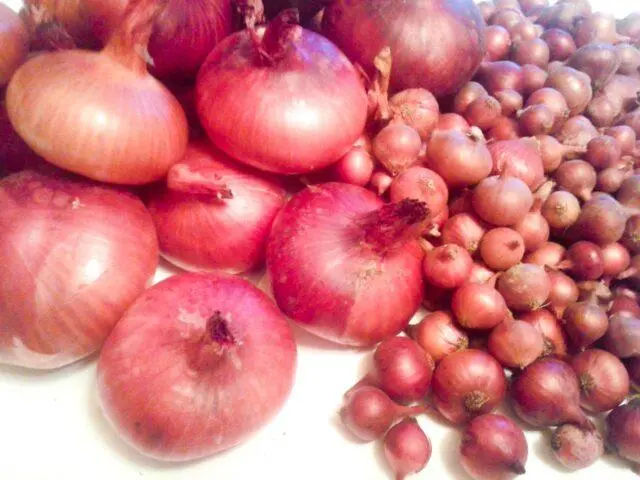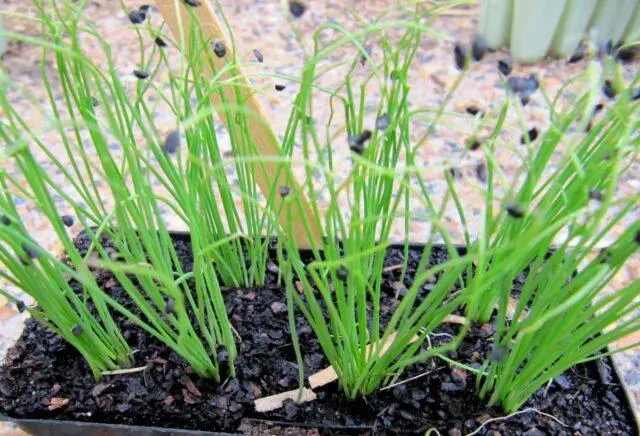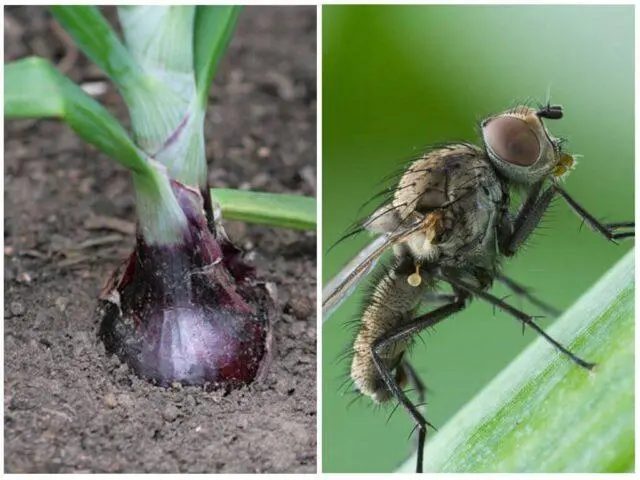Contents
Onion Danilovsky is a variety of selection, obtained more than half a century ago. It is resistant to different climatic conditions, so it can be grown in most regions. Yields are low but stable. The taste is semi-sharp, with a slight sweetness. Such onions can be used both in salads and in other dishes. Long shelf life attracts both growers and buyers.
History of origin
Danilovsky 301 is a red onion variety bred back in the 1940s. on the basis of the Federal State Budgetary Scientific Institution “Federal Scientific Center for Vegetable Growing”. The variety was successfully tested, and in 1950 it was included in the register of breeding achievements.
Luk Danilovsky is approved for cultivation in the Volga region, the middle lane, as well as in the regions of the North-West. The variety is quite resistant to adverse weather conditions, so it can be bred everywhere, including the Urals, Siberia and the Far East.
Description and characteristics of Danilovsky onion varieties
Onion Danilovsky is a rather unpretentious variety that normally tolerates short-term frosts and drought. It is characterized by moderate yield. One of the advantages is juicy and tasty pulp.
Appearance
Bulbs of the Danilovsky variety are flat and round-flat. By weight, on average, from 80 to 150 g. The upper layer is represented by dry scales of dark red, purple colors. Juicy scales of pale lilac and light purple. The variety is two- and three-germ, i.e. in one nest grows two, less often three bulbs.
Productivity
The yield of the variety is low – 1,2–2,3 kg per 1 m2. At the same time, root crops are storable and stored for several months (under normal conditions – temperature 2-5 degrees, darkness, moderate humidity). Onion Danilovsky belongs to mid-season (medium) varieties – it ripens in 3,5-4 months. In industrial cultivation, the marketable yield ranges from 123 to 333 q/ha.

From 1 m² you can collect more than 2 kg of Danilovsky variety bulbs
Disease and pest resistance
The immunity of the Danilovsky onion variety to most diseases is quite good. But the plant can suffer from downy mildew (peronosporosis) and onion flies. If the leaves begin to turn yellow, become covered with a gray coating, treatment with any fungicide should be carried out as soon as possible. Plantings are also periodically inspected for pests. When they are detected, onions are sprayed with insecticides. In the early stages, it is desirable to use folk remedies.
Application
The taste of Danilovsky onion is semi-sharp, with a light, pleasant sweetness. Good for fresh consumption, including in salads and other vegetable snacks. It is used for pickling and cooking various dishes – soups, meat, fish, vegetables. The variety is mainly intended for commercial production, although it can also be grown in private farms.
Advantages and disadvantages
Despite the low yield, summer residents appreciate Danilovsky onions for their pleasant, moderately spicy taste. The culture is unpretentious, grows well on different soils.

Root crops are storable, they can be transported to the place of sale or processing
Pros:
- salad taste;
- universal purpose;
- good keeping quality and transportability;
- undemanding to care;
- can be grown in most regions.
Cons:
- low yield;
- instability to downy mildew;
- susceptible to onion fly attack.
Growing onion Danilovsky
Variety Danilovsky can be grown in two ways:
- Annual crop from seeds (in regions with warm summers).
- Biennial onion sets (in cool conditions).
In the first case, ripening is a little faster – the bulbs reach technical ripeness in 3,5 months. When growing from sets, the crop can be harvested 2–3 weeks later, i.e. after 4 months.
How to grow from seeds
Since the culture matures in 3,5–4 months, the seeds are sown both in open ground and for seedlings. In the first case, the period falls on the period from late April to mid-May. If seedlings are grown, then it should be taken into account that Danilovsky onion seedlings are transferred to open ground 60 days after germination (in mid-May). Thus, it is worth planning sowing for seedlings no later than mid-March.
Regardless of the method of cultivation, seeds of the Danilovsky variety should be prepared. They do this in several stages:
- Soaking in a 2% solution of potassium permanganate for 30 minutes.
- Immersion in warm water for 6 hours. You can add a few drops of “Zircon”, “Epin” or other growth stimulant to it.
- After that, the seeds are allowed to lie on damp gauze in a saucer with a small amount of water at room temperature.
When planting onion seeds of the Danilovsky variety, several furrows are planned in the ground with an interval of 10–15 cm, a depth of 2 cm. The grains are placed one at a time at a distance of no more than 10 cm. This is quite enough for a moderately dense planting.
When growing seedlings, Danilovsky onion seeds are sown in containers, cassettes or peat pots (2-3 per container) to the same depth. First, the containers are placed in a warm place (23–25 degrees) and covered with glass, after the emergence of shoots they remove it, periodically water it. They are transferred to the soil after two months, while the earth should warm up to at least +10 ° C.

If the summer is short, it is better to grow onions from seedlings.
A month before planting, they dig up the earth in the garden and add 5 kg of humus or compost per 1 m2. If there is no organic matter, complex fertilizer is added – 70–80 g for the same area. If the soil is clayey, it is necessary to close up several large handfuls of sand or sawdust. The soil for seedlings must be disinfected in potassium permanganate or kept in the freezer for several days.
Planting sevka
Planting Danilovsky onion sets is planned for mid-May. It must first be selected. The bulbs should be free of damage and rotten parts. After that, the seeds are heated for 6-7 hours at 45 °C. The planting pattern is exactly the same, but the interval between rows is 20–30 cm.
Features of care
Danilovsky variety onion care is quite simple and includes several rules:
- During the first month, water weekly, then every 10 days. In drought, the volume of water is slightly increased.
- Danilovsky onions are fed three times a season. The first fertilizer is applied two weeks after mass shoots, the second – at the end of June, and the third – seven days later. You can use complex mineral and organic top dressing, watering is done at the root.
- Loosening, weeding – as needed.
- Mulching plantings with straw, sawdust, hay (a small layer is enough).
Diseases and pests of Danilovsky onion
Since the Danilovsky variety can suffer from downy mildew and onion flies, plantings should be inspected periodically. From fungal diseases, fungicides are treated (one to choose from):
- Bordeaux liquid;
- “RAW”;
- Fundazol;
- “Score”;
- “Ordan”.
Effective insecticides are used to kill insects:
- “Fitoverm”;
- “Aktara”;
- “Vertimek”;
- “Match”;
- “Karate” and others.
If the Danilovsky onion is grown on feathers, then it cannot be treated with insecticides and other drugs. In these cases, an infusion of tobacco dust, garlic cloves, a decoction of potato or tomato tops, a solution of edible salt, laundry soap and other folk remedies are used.

Onion fly can cause significant damage to the onion crop
These additives will not only scare away the onion fly and other pests, but also serve as an organic fertilizer.
Conclusion
Onion Danilovsky has a pleasant taste, less spicy compared to traditional onion varieties. This is one of the rare varieties of red onion that can be grown even in Siberia. During care, special attention should be paid to watering and fertilizing. To combat insects, it is better to use folk remedies, then the greens can be used for food.









